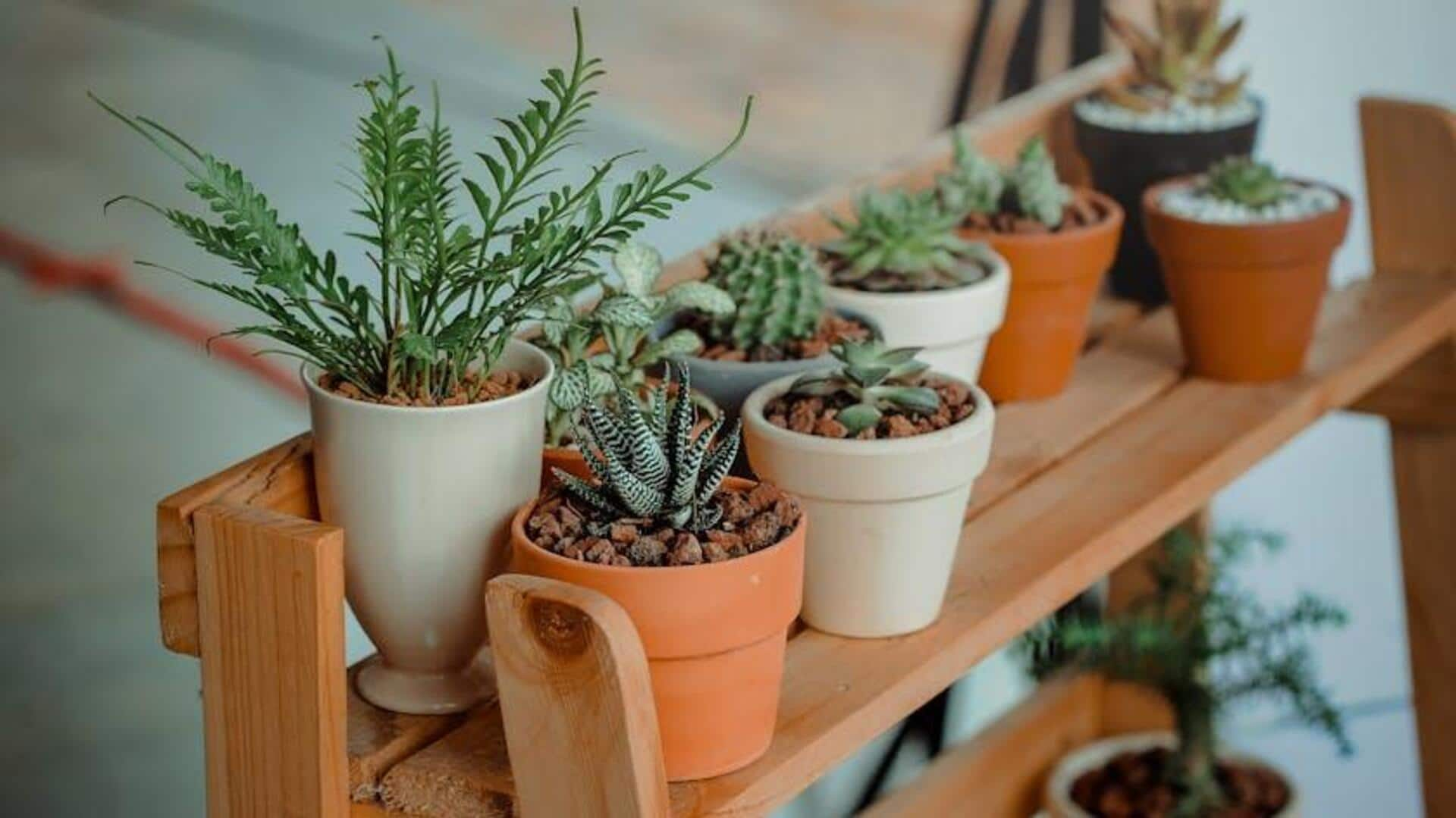
How to keep your houseplants healthy with minimal effort
What's the story
Houseplants can work wonders in any living space, but keeping them alive and thriving requires more than just watering them occasionally.
Many plant parents tend to ignore simple tricks that can easily enhance growth.
By knowing what your plants require and tweaking a bit, you can create an environment for them to thrive.
Here are some easy tips to improve houseplant growth without spending on fancy tools or techniques.
Light management
Optimize light exposure
Light is essential for photosynthesis, which powers plant growth.
Place your plants near windows where they get enough sunlight, but watch out for direct sun exposure that could scorch leaves.
Rotate plants weekly to ensure all sides get even light distribution.
If natural light falls short, opt for LED grow lights as an addition to simulate sunlight and encourage healthy development.
Humidity control
Maintain proper humidity levels
Many houseplants come from tropical areas and need more humidity than what is usually found indoors.
To boost humidity, cluster plants together or set them on trays with water and pebbles.
Spraying leaves once in a while can also keep moisture levels around the plant foliage.
Investing in a humidifier is another smart way to create a comfortable habitat for your plants.
Soil selection
Use appropriate soil mixes
The right soil mix gives houseplants essential nutrients as well as proper drainage.
Don't go for garden soil, as it may compact easily and hinder root growth.
Instead, opt for potting mixes designed specifically for indoor plants, offering good aeration and moisture retention properties.
Adding perlite or vermiculite can further improve drainage, while making sure roots have access to necessary oxygen.
Pruning practices
Regular pruning techniques
Pruning not only helps control size but also removes dead/diseased parts and encourages new growth by redirecting energy toward healthier areas of the plant.
Use clean scissors or pruning shears to regularly trim back overgrown stems/leaves without damaging healthy tissue nearby.
Doing so will keep your houseplants looking vibrant while promoting robust development over time.
Nutrient management
Fertilize wisely
Fertilizing gives nutrients needed to ensure healthy growth of houseplants (when done right). But, too much can hurt them instead.
Opt for balanced fertilizers designed especially for indoors as per package instructions for how often.
This varies by species' needs—generally every four weeks during growing seasons such as spring to summer months only.
Unless otherwise stated by manufacturer instructions included with product packaging information available at purchase point globally today.